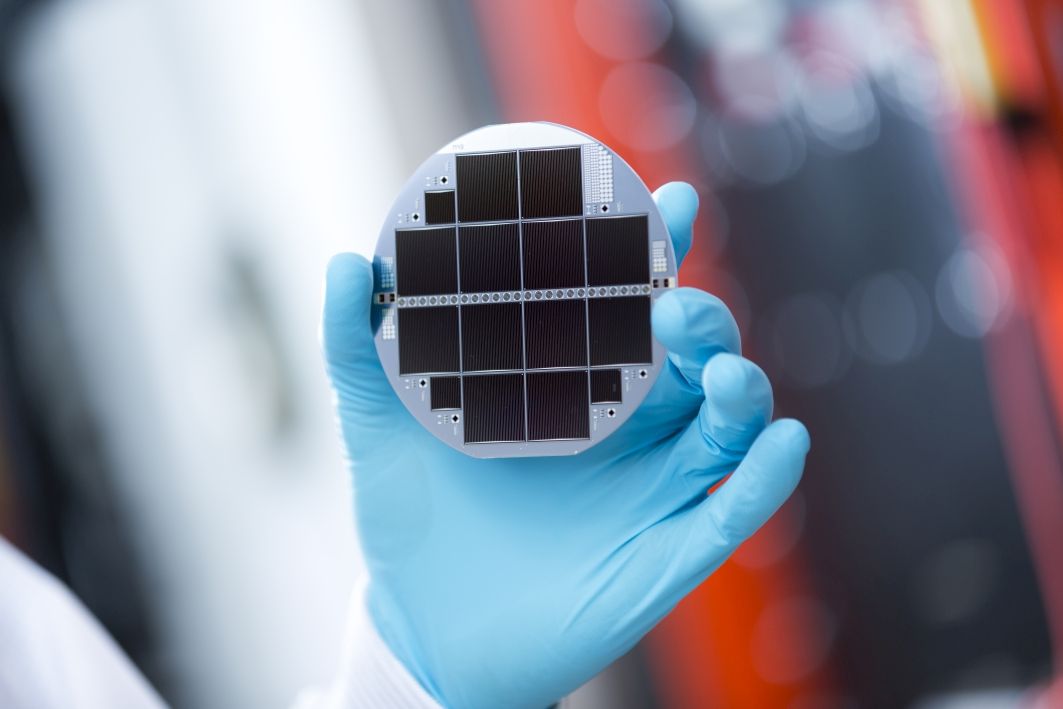| Duration: | May 2017 - October 2020 |
| Contracting Authority/ Sponsors: | European Union |
| Project Partners: | Topsil GlobalWafers A/S (DK), AIXTRON LIMITED (UK), AIXTRON SE (DE), JOANNEUM RESEARCH Forschungsgesellschaft mbH (AT), AZUR SPACE Solar Power GmbH (DE), Universiteit Leiden (NL) |
| Website: | https://sitasol.com |
| Project Focus: |
SiTaSol – Application Relevant Validation of c-Si Based Tandem Solar Cell Processes with 30 % Efficiency Target

Crystalline silicon solar cells dominate the photovoltaic market due to the high availability of silicon, their low cost and their proven reliability over many years. A simple silicon solar cell, however, can only reach a limited efficiency. On the other hand, III-V multi-junction solar cells have already demonstrated that almost twice as much electricity can be generated on an area of the same size.
This is an important motivation to work on high efficiency silicon-based multi-junction solar cells, not least because the high efficiency decreases the use of resources and the ecological footprint. In order to become competitive with the established technologies, the costs of the new solar material must first be reduced by a factor of 100. This is now being investigated in the EU project SiTaSol (Tandem Solar Cells of Ga(In)AsP on Silicon). The III-V layers with a thickness of only 2-5 µm are either directly deposited on the silicon or transferred from a GaAs substrate to a Si substrate in a lift-off process. In the first half of the project, both methods are investigated so that the most promising approach can be selected. The main project goals are to develop and test a cost-effective procedure for the industrial production of these solar cells. This includes developing an affordable method for manufacturing silicon substrates that have surface properties suitable for III-V epitaxy. Also, cost-effective deposition processes for III-V layers including product gas disposal, metal recycling and processes to lift off and transfer the III-V epitaxial layer onto the silicon substrate shall be developed. A series of fundamental research work shall be carried out and the industrial feasibility of the new technologies shall be tested. The goal is to develop a tandem solar cell with an efficiency of 30 % using cost-effective production processes. A small demonstration module shall be constructed using the new solar cells. Besides these technological developments, a life cycle analysis will also be carried out in which the material and energy flows will be considered along with the hazards that may arise due to the toxic precursors. The development of new photovoltaic technologies shall fulfill high environmental standards from the start.
During the course of the project, processes for the production of low-cost Si substrates for the direct epitaxy of III-V compounds have already been identified. Furthermore, we have identified low-cost processes with self-organized nanostructures to produce silicon sub-cells with a flat front and with high absorption. The deposition of the III-V layers by high rate epitaxy appears promising, as does the fabrication of the metal contacts via printing and electroplating processes. The lifetime analysis also shows that the high efficiency of the tandem solar cells has positive effects.
Besides photovoltaic applications, the project supports the competitiveness of the European industry by creating innovative solutions to reduce the manufacturing costs of III-V materials that are used in many commercial products like laptops, sensors, LEDs, etc.